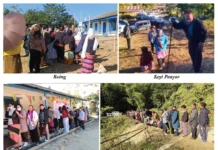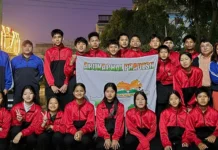SHILLONG, 3 Dec: The Meghalaya government will hold a meeting next week with residents of the disputed Punjabi Lane area in Shillong over the relocation plan, officials said on Saturday.
In its plan presented before the high court on 29 September, the state government had proposed to relocate 342 families from the disputed area to land owned by the Shillong Municipal Board. The families, however, demanded that the government also build houses for them.
“We have fixed a meeting with the Harijan Panchayat Committee (HPC) on 7 December. We are hopeful that both sides will be able to sort out their differences in the meeting,” a senior official of the Urban Development Authority told PTI.
The HPC, which represents these families, had requested to modify the plan prepared by the state government, and the government is not averse to some “adjustments,” he said.
The state government had also told the high court that it would increase the size of the plots as requested by the families.
People from Punjab, who were brought to Shillong around 200 years ago by the British to work as cleaners and sweepers, live in the area.
Following the assault of a person, a clash broke out in the area in May 2018 between Khasis and Sikhs. A curfew was imposed in the area for over a month following the violence.
Soon after, the Shillong Municipal Board began an exercise to determine the legal residents of the area, after demands to relocate the ethnic Punjabis.
A high-level committee was set up by the state government to solve the decades-old issue.
The state government then formulated a plan to relocate the settlers, most of whom were identified as “illegal encroachers,” to flats.
After initial reluctance, the HPC agreed to the relocation of the settlers from the area, locally known as Them Iew Mawlong, but with certain demands, including the government providing them plots and bearing the cost of constructing their houses.
However, several local NGOs opposed the demand, warning that “all hell will break loose” if the demand is accepted when “indigenous poor are left to fend for themselves.” (PTI)



